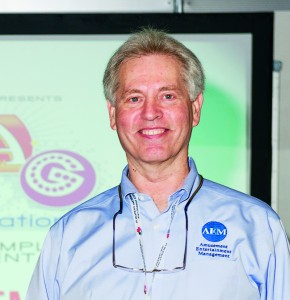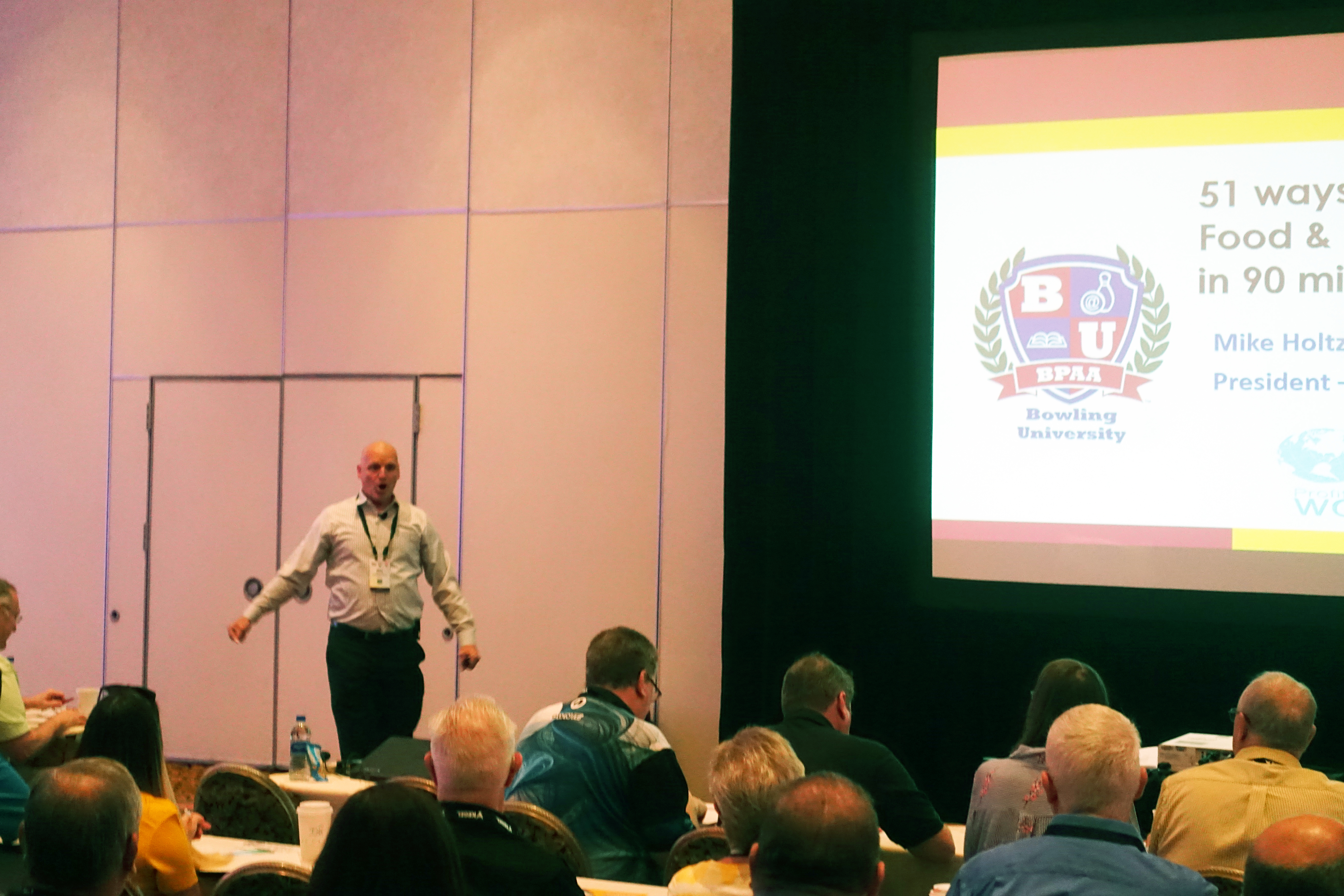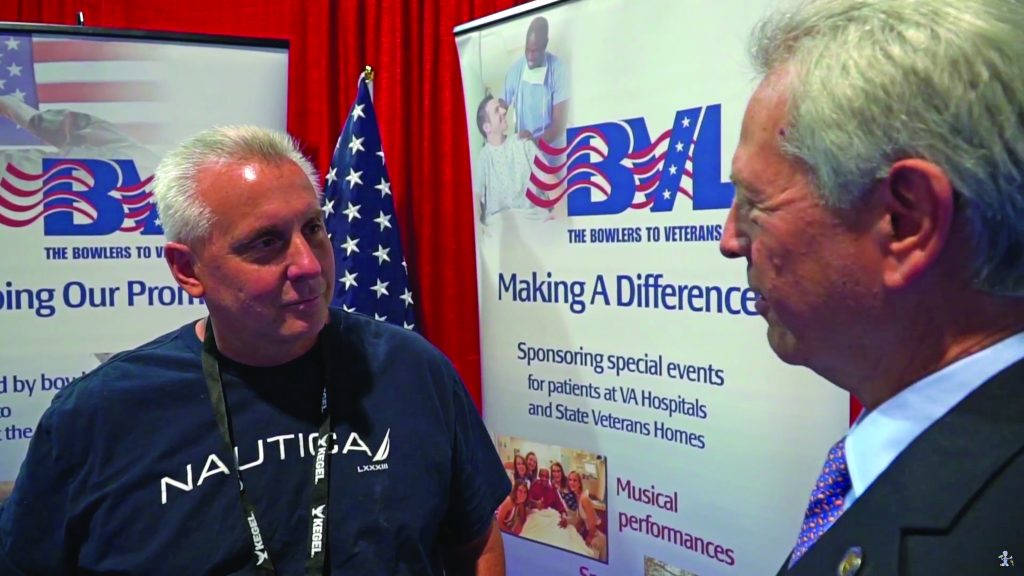What’s Hot…And What’s Not – Part Five
Using Game Trends & New Ideas in Promotions to Heat Up Revenues

by Frank Seninsky, President/CEO Amusement Entertainment Management (AEM) & Alpha-Omega Amusements & Sales
There was a lot to learn by attending the Bowl Expo. Bowling Centers are taking a leading position and raising the bar of the family entertainment center industry. And they are being greatly assisted by the BPAA (Bowling Proprietors’ Association of America) that is nurturing the next generation with a long-term, definite plan to bring them into leadership.
For the fifth part of this series, I’m going to cover what I learned and apply it to our industry sectors: small FECs, medium FECs, big ones, new ones, street operators, traditional bowling centers, bowling-anchored FECs, trampoline parks, etc. Each segment of the industry has a different agenda and budget that direct what they can accomplish in the real world.
That last part is my dilemma. My AEM and Alpha-Omega teams deal with so many different types of clients, plus our own routes, and they’re all different. Every decision comes down to reality. What can you currently afford to do? What are you capable of doing depending on who you are (your passion and commitment level) and your mindset? That’s what the people in the industry need to know.
Everything is always hype! The talk is all in terms of buzzwords, but few really know what decisive action steps to take. (VR is a good example of this.) Some people jump in because they can afford to take the risk early, while others will never take a risk. It’s just not in their nature and they won’t do it no matter what. It could be as simple as just being averse to change (more on this later).
When I’m at a trade show like Bowl Expo or some other event, I’m interviewing exhibitors and key people for my YouTube video series. (You can watch my Bowl Expo series by visiting this link: www.youtube.com/playlist?list=PLCs2Ejr78O-kwFxb0J_HlJb1NNA fYSnMw). The goal of each three-minute interview is to find out who are these leaders are and what their vision is.
At the Foundations University educational program we run, we get a lot of different kinds of people and the same holds true at industry conventions. One thing’s clear to me: Those who go to the seminars sincerely want to learn and those who want to learn will be successful. I’m happy to report that a lot of people go to seminars these days and that’s good for our industry!
There was one session at Bowl Expo that was probably one of the best seminars I’ve ever been to. It was called F&B 101: 51 Ways to Improve Food & Beverage Operations and was presented by Mike Holtzman. He’s president of Profitable Food Facilities Worldwide and has over 40 years’ experience in restaurant operations, 26 of those as a consultant. His focus was on the nuts and bolts.
Most importantly, he stressed that if you want to run a good food operation you should take care of the basics. For example, he said you need to learn how to buy chicken and meats, need to know about food in general, and how to buy things in bulk. Holtzman offered a number of tidbits like that, sharing knowledge that usually only chefs have. I thought that was a great approach because he gave information everybody can learn from, even if you’re not in that business.
He taught how you really could afford to buy better food and showed how you could save money by making fresh chicken and doing it right instead of buying pre-breaded chicken and then cooking it in a microwave or kitchen. The result was lower overall cost, even when adding in the labor and other expenses, and a better tasting product for your customers.
Mike Holtzman of Profitable Food Facilities leads his F&B session.

This seminar woke everybody up, whether you were a mom or a dad looking at food costs for your own household or if were in the business of serving food. It was an eye opener, focusing first on how to buy better food and save money, and then on how to present it. For example, the difference between a $4 hamburger or a $14 hamburger is all in the cut of meat that you buy and how you present the meal. (See the slides on the facing page from his presentation for some of his tips.)
What was really great about the “51 Ways” seminar was that everybody walked away with a dozen things they could do right away. While this session was focused on bowling centers, the lessons applied to any family entertainment center. The bottom line is that you can have much better food without much more effort. The key is understanding it, buying correctly and cutting waste.
Food is very important that in every financial model. It is – or should be – a significant part of your revenue. If you’re not operating your food service at a “B” level at minimum, people are going to eat elsewhere. The result is that they won’t stay as long at your facility, if they even come at all.
The good news is that the whole family has to eat, so they want to go to a place that’s decent. I’m not saying you need to be A+ or five star, but your facility needs to be a good choice as a place to socialize for two to two-and-a-half hours and get something good to eat.
Look, it’s expensive to take the whole family out for a night of food and fun. We want that total experience to be pleasurable: the food and service has to be good, and the environment is not so loud that you can’t hear the conversation at your table.
People are going out much fewer times than they used to, because whether we believe all the hype in the media or not (on both sides), families are pretty stressed for disposable income for entertainment. It’s typically last on their list of priorities. The way I see my world right now, I’m lucky if people go out once a week and even consider bringing their families to an entertainment center, rather than just go out to eat or see a movie. During some times of the year, that once a week becomes just once a month (like in September after families buy school clothes and supplies). Our benchmark is that we want our location to be their place of choice at least three times a year.
Let’s talk About BPAA
 I’d like to discuss the Bowl Expo, but perhaps even more so, how its organizer, the BPAA (the Bowling Proprietors’ Association of America), helps educate and focus the bowling industry. Their market has the same issues between the different tiers as every other sector. However, in addition to the three tiers (manufacturers, distributors and proprietors), they have a fourth: the professional bowlers. Managing these tiers is somewhat complex.
I’d like to discuss the Bowl Expo, but perhaps even more so, how its organizer, the BPAA (the Bowling Proprietors’ Association of America), helps educate and focus the bowling industry. Their market has the same issues between the different tiers as every other sector. However, in addition to the three tiers (manufacturers, distributors and proprietors), they have a fourth: the professional bowlers. Managing these tiers is somewhat complex.
What I was most impressed with at Bowl Expo was their outreach. There were more than 400 newbies at this year’s convention (some were BPAA members and some weren’t). Organizers had a program that encouraged every member to bring a newbie, or to help one register and attend. What that showed me is that these bowling proprietors brought a lot of their local area competition, which doesn’t happen in every industry in the world. These newbies wore name tags printed in red so they were easy to identify, meet and talk to. There was even a special reception where the newbies were greeted by the entire BPAA on-site staff and board of directors.
Thinking more broadly, this is something that could (or should) happen in all of our industry sectors, because we’re pretty open. After all, we don’t really dislike our competitors and in many instances, we’re friends. But I find that within the bowling industry, a lot of these local competitors are truly friends with each other. Of course, they still compete for league players, but you’ll find that they bowl at each other’s centers. That friendship is crucial, because when a local or state issue arises that affects bowling, they can more easily work together to solve it.
The same happens with amusement game operators, but I don’t feel this currently happens so much in the FEC sector. Just imagine how strong a united FEC sector could be as there are certainly more types of family entertainment centers in an area than there are bowling centers. Plus, many of the issues are similar.
Back to Expo…
In addition to the food and beverage session, I attended 15 other seminars at the show and want to share more of my takeaways from some having to do with customer experience.
Naturally, I picked up some interesting statistics, because I’m a numbers guy. Surveys show that 80 percent of all companies think that they provide good customer service, yet only 8 percent of the customers agree! There’s a huge discrepancy between reality and perception on the part of business owners and management people!
I don’t think our industry is any different. If we did separate surveys of FEC operators and their guests, I think we’d find similar statistics. Since we must fit roughly into that statistic, business owners have a long way to go to learn what true good customer service is!
In one session, the expert asked the audience to come up with good customer service ideas. There were hundreds suggested, but out of all of them, I wrote down two I thought were brilliant.
The first could be used at any restaurant, bowling center FEC or other location. Whenever the staff sees a family coming in with young kids –– and a lot of the time, there’s nothing for the youngest member of the family to do because it’s a toddler or infant –– they gave them a coupon that, if they come back again, said the bowling center would pay for the babysitter. I thought that was genius.
The second idea was focused on bowling. Whenever they see a new customer, the owner or GM welcomes them and starts chatting them up. He or she offers to bowl with them and promises a great bounce-back coupon to anyone in their group who bowls a strike before he or she does.
What a great way for the management and staff to get to know their new customers and for each person to come away with some useful tips on bowling. I’ve never seen a general manager do that, though I can tell you that each of our game technicians does play games with new customers, teaching them the finer points of how to play.
As an aside, I did something similar decades ago at the Congressional Pinball Tournaments in Washington, D.C., that I used to put together with AMOA and AAMA. I struck up a conversation with an attendee and got to show this person, his wife and two kids how to score more points by holding the pinball on the flipper and aiming for the higher-point shots. Each person in the family ended up winning their division and I got to personally know each of them. (By the way, this lawmaker turned out to be a senator from Indiana, who days later, was nominated to run on the presidential ticket and became Vice President of the United States, Dan Quayle.)
I think both of those ideas – the free babysitting and the engagement with new customers – can help close that 72 percent gap in customer service.
QubicaAMF’s HyperBowling
Statistics show that even though more than 60 million people bowl at least once a year, there is still a lot to learn about their positive and negative feelings and their experiences. There are also reasons why the remaining 270 million people in the U.S. do not currently bowl or never have. The future of sport depends on getting more people to bowl…and do so more often.
Enter QubicaAMF’s new HyperBowling. The company took a large, central spot on the trade show floor to officially roll out their innovative way to play. Also, company president and CEO of the company, Emanuele Govoni, gave an extremely detailed seminar on the positive and negative aspects of bowling and how he believed HyperBowling could increase the target market for the sport and make it a more social experience. This could be a real game changer.
How it works: Players bowl one ball per frame, trying to time the bounce of the ball against bumpers with flashing lights to get multiplier points for the number of pins knocked down. Timing and finesse make this new game a lot like pool and bowling combined. Amazingly, the time it takes to bowl 10 frames is shorter than regulation bowling. The best news is that even an average bowler (like me) can score higher than a pro (at least once in a while — timing and a bit of luck is always appreciated!). The bowling center’s staff can switch between conventional and HyperBowling from the front desk, too.
To learn more about the new way to bowl, watch these two video clips: www.youtube.com/watch?v=I7xqglwavHs and youtu.be/_9cSrWB 6P-k.
Human Nature: Why Are Some People Afraid of Change?
When I speak with people –– game operators, bowling center owners and FEC people –– with some of them, no matter what idea you offer, they have excuses why it won’t work. “We don’t have enough space to put a good game room in.” “Parents don’t like redemption.” “We don’t want to put in a prize counter.” “It’s going to be too labor intensive.” “The bowlers do not want to be distracted.”
What they’re really telling you is that they don’t want to take any risks. They like the way things are, they don’t want to do anything different, and they’re simply averse to change. I think that’s pretty much sums up a majority of the people that have been in this industry for a long, long time. I’m not keying on bowling here, I’m talking about everybody: the human race.
With some people, you could talk to them until you’re blue in the face and you’re never going to get them to change anything. Ever. You might as well put a sign on them that reads: “You’re not going to be in business very much longer.” Such is life. This mindset doesn’t make you a bad person, it just means that while you were good in the past, you’re not cut out for the future. If that’s you, the best path would be to admit it, retire or go do whatever it is in life you enjoy, and help your business by moving on or passing it to the next generation…and have faith in them.

Bowling’s “Young Guns” Take the Reins
I can tell you how bowling set things up for the successful transition to the next generation. This started a couple of decades ago when one BPAA president, Jeff Boje, formed the “Young Guns” committee and got the children of veteran proprietors to get involved. A generation and a half later, I had the chance to talk to Boje at the convention about the program.
He formed a committee and basically took one or two of the Young Guns to every board meeting during his term and let them sit in on the session. They couldn’t vote or anything, but they could listen and learn! When the meeting was over, they went back to work at their parents’ bowling centers armed with that knowledge.
That “Young Guns” committee grew. Today, you can see that a huge number of those “next generation” leaders have taken over from their moms and dads, and have changed the way they do business, expanded and are doing very well.
What About Amusement Game Operators?
In one of our Amusement Expo industry seminars, we asked the operators in the room the big question: “How many of you want your children to be in your business?” I would say about 95 percent of them said they did not, for whatever reason.
At the time, I don’t think many of the logical, expected reasons given were completely honest, but we can read between the lines. I think it’s that for years some operators have been milking the route, never really upgrading it or investing in the future.
Because of that, they know the ballgame’s going to end one of these days. It goes back to the core issue of what kind of person – and business owner – you are: one that will evolve as society and technology changes or one that will just dig in and eek out whatever living they can as the business steadily declines.
There’s another reason that maybe isn’t as obvious. Looking back on the operators I grew up with, who were older than me by maybe a decade or more, most of them are dead. I mean physically dead! Sadly, they died fairly young, and I think the reason is the grind of being an operator in the old days.
Think about it… They usually went to about 15 bars a day to collect and service the games and I don’t know about the rest of the country, but the tradition in the northeast was that you’d divide up the money and have a drink with the owner, even if it was just 10 in the morning. The time of day didn’t matter. You’d do that at each stop on your route. By the end of the day, I don’t even know how you drove around! Do that for 25, 30 or 40 years, and I don’t think you’d want your kids doing that!
I don’t know if it’s like that today because I haven’t been on the street in years, but that’s the way it was in the “old days.” Also, everyone was smoking cigarettes back then. The street operating business wasn’t a “healthy” one back in the day.
In the bowling industry, you can also read between the lines and figure that many had nice, 30-year leases, they all knew when they were going to end. When that happened, rent would be going up 10, 20 or 30 times. Obviously, nobody can afford to pay it. In most cases, the land is worth more than the building. Unless you owned the land and the facility, you were stuck.
Also, bowling centers were/are often boxed in with no real way to expand, and they were too small to add attractions. As times changed, they had to go up against the big boxes. When that happens, you lose.
Another Way to Analyze a Business Change
Andy Bartholomy of Andy B’s Entertainment, owner of multiple bowling centers, answered questions at one of the two redemption game seminars presented by Pinnacle Entertainment Group’s George McAuliffe and his son Howard. Andy told us that he will take an idea and he’ll look at it, and analyze it for maybe a year, in eight or nine different ways. In those cases where he does decide to go with it, he’s sure it’s going to succeed and he has a knack of transferring that positive passion to his staff.
I like the way his mind works and I wish everybody could be that type of a business owner. He’s the definition of an “entrepreneur.”
Andy is also humble enough to point out that even after all that forethought and planning, not every idea will be a home run. He’ll be the first to admit that he’s done a lot of things that didn’t work, and I think that’s what also makes a successful entrepreneur. You try a lot of things, and you know right away whether they’re going to click or not. You then look at what’s the best way to tweak them, and if they still don’t work, you drop them and do something else. That concept is known as “fail fast.” You move on rather than continue to throw good money after bad.
Closing Thoughts
One of the last takeaways I wrote down in my Bowl Expo notes is a quote that has to do with why you get up each day. It says: “Everybody needs a little stress in order to motivate them to get up in the morning. If there’s no stress, and your business is running smoothly, there’s no reason for you to get out of bed.”
This comes to mind each time I feel stress in my business or personal life. I truly believe that this keeps me highly motivated to keep moving forward and never let my business stagnate. Perhaps it makes me more open to change. That’s a neat thought for me and I hope that it might be helpful to you as well!
Frank Seninsky is president of the Alpha-Omega Group of companies, which includes a consulting agency (Amusement Entertainment Management), two nationwide revenue-sharing equipment suppliers (Alpha-Omega Amusements and Alpha-BET Entertainment), and Alpha-Omega Sales, a full-line game and related equipment distributor. During his 47 years in the leisure entertainment industry, Seninsky has presented nearly 400 seminars and continues to regularly write columns in numerous trade publications. He served as president of the AMOA (and was on the board for 22 years), and was president of IALEI (founding member and on the board for 11 years). Frank is the sole owner of Foundations Entertainment University, now in its 16th year. He is also considered a leading industry expert in the design, layout, and operations of coin-/debit card-operated arcades and FEC attractions, and is often called upon as an expert witness in cases involving the amusement industry. Frank edits The Redemption & FEC Report e-newsletter (35,000+ readers worldwide) and also writes a blog at www. frank-thecrank.com. Frank can be reached by phone at 732- 616-5345 or by email at fseninskyAEM@gmail.com (website: www.AEMLLC.com).


1 Comment
Pingback: What’s Hot…And What’s Not –– Part Five - Frank 'the Crank' Seninsky Blog